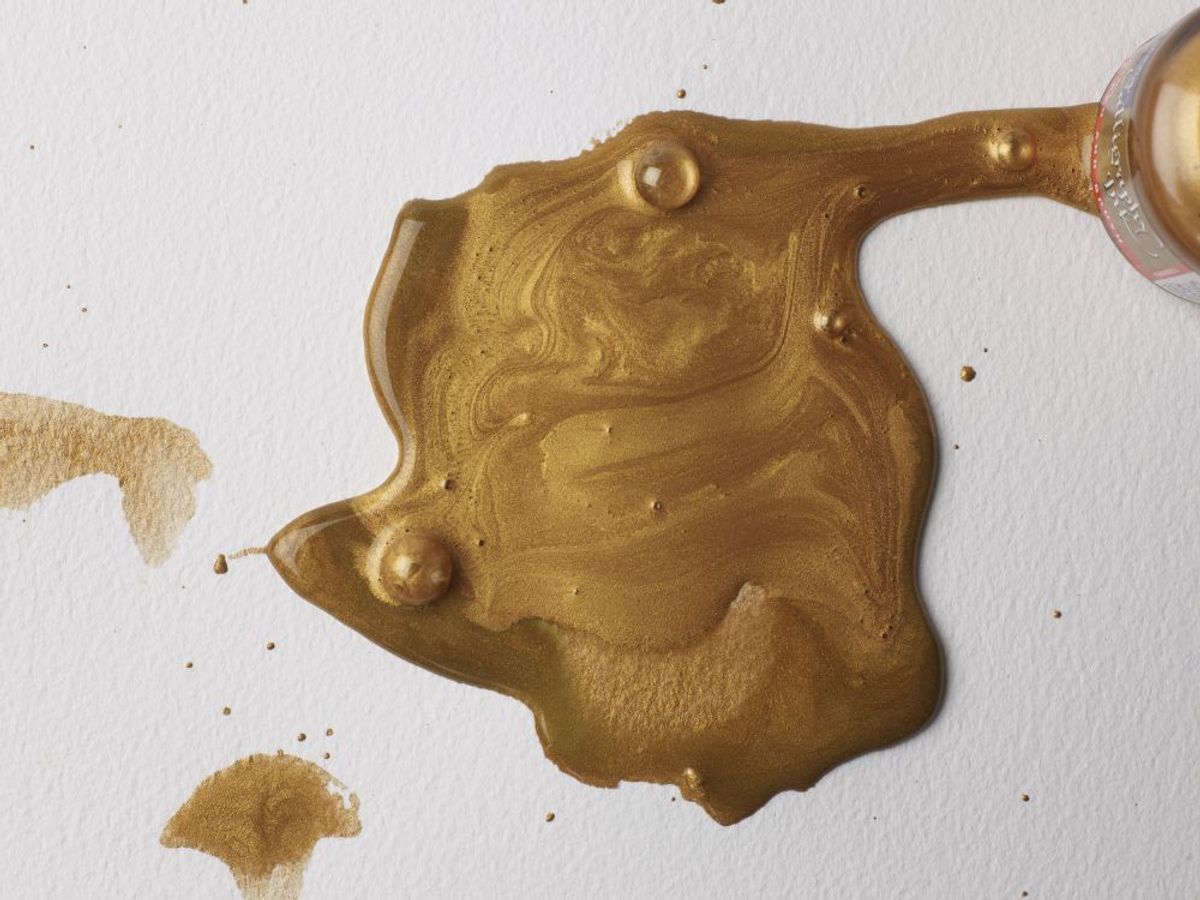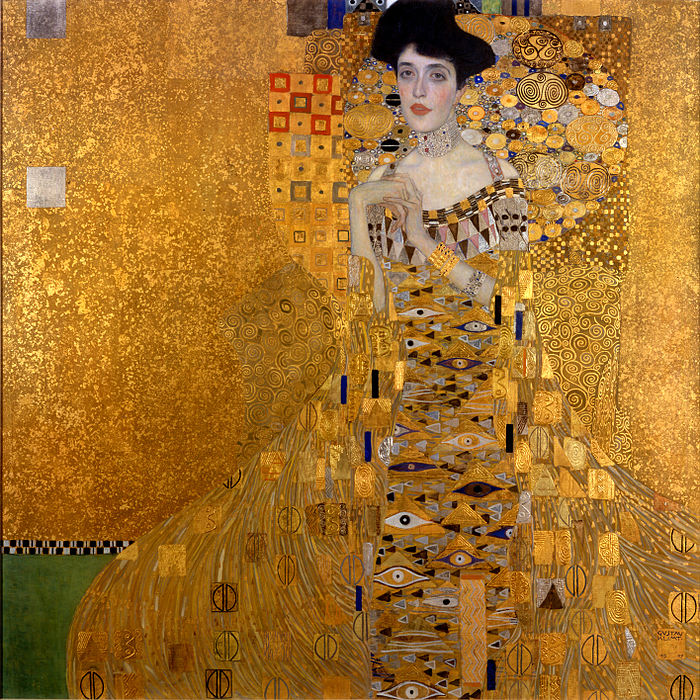
Gold is one of the most symbolically loaded colours. It’s used to indicate wealth, status and desire across subjects as varied as architecture, miniatures and paintings.
The history of gold
Gold leaf (extremely thin sheets of gold) was a popular material used in illuminated manuscripts and miniature paintings which flourished under the Mughal Emperor Akbar (1542–1605). He helped establish an Indo-Persian artistic culture, and miniature paintings were at the centre. To reinforce how special these works were, gold was used to illuminate text, architecture, textiles and decorative borders. Artisans prepared the paint from finely powdered gold, which would be laid on top of a special vellum paper.
Famous gold paintings
Two iconic portraits in art history used gold to great and stunning effect.
Peter Paul Rubens was a Flemish artist, known for his baroque style which was popular with nobility and art collectors. His portrait, ‘Marchesa Maria Serra Pallavicino’, painted in Genoa in 1607, uses gold to denote the wealth, opulence and beauty of his sitter.

Marchesa is seated in an architectural backdrop, in a shimmering dress of heavy drapery with a high ruff collar and extensive gold embroidery. She was the wife of Niccolò Pallavicino, a banker and host of Rubens’s employer, Duke Vincenzo I Gonzaga of Mantua. She likely wore this gown at a ball that the Duke attended and on the reverse it is noted by Rubens as a gift, no doubt as a thank you for the family’s hospitality.
Gold in contemporary art
Perhaps the most famous painter to use gold in portraiture is the Symbolist, Gustav Klimt. Arguably, the most famous painting from his ‘Byzantine (or Golden) phase’ is the first portrait he made of Adele Bloch-Bauer in 1907.
Klimt completed this portrait of Mrs. Bloch-Bauer over two years, immortalising her in what many consider to be the ultimate expression of desire and reverence. At this point, Klimt was already famous for his unique style; he had been commissioned to create three paintings to decorate the ceiling of the Great Hall of the University of Vienna. When completed, this work was criticized for being too racy, so it was never installed in the Great Hall and was destroyed by the retreating German forces in May 1945.

Thankfully, the portrait of Bloch-Bauer still exists; it had been stolen and installed in the Galerie Belvedere in Austria by the Nazis until, after a lengthy international court battle, it was returned to her heirs in 2006. Regardless of the initial reception of his Great Hall gold portraits, by the time Klimt painted Mrs. Bloch-Bauer his sensual style was prized and sought after by collectors.
Today, if you wish to use gold in your artwork, you don’t have to go through the pain-staking process of grinding gold yourself or using notoriously delicate gold leaf. Winsor & Newton has created a new range of Artists’ Oil Paint in metallics that allows you to experiment with the effects these paints provide; the range comes in Gold, Renaissance Gold (a warmer gold), Silver, Pewter, Bronze and Copper.
(Taken from Winsor & Newton's article, "Spotlight on: Gold")
